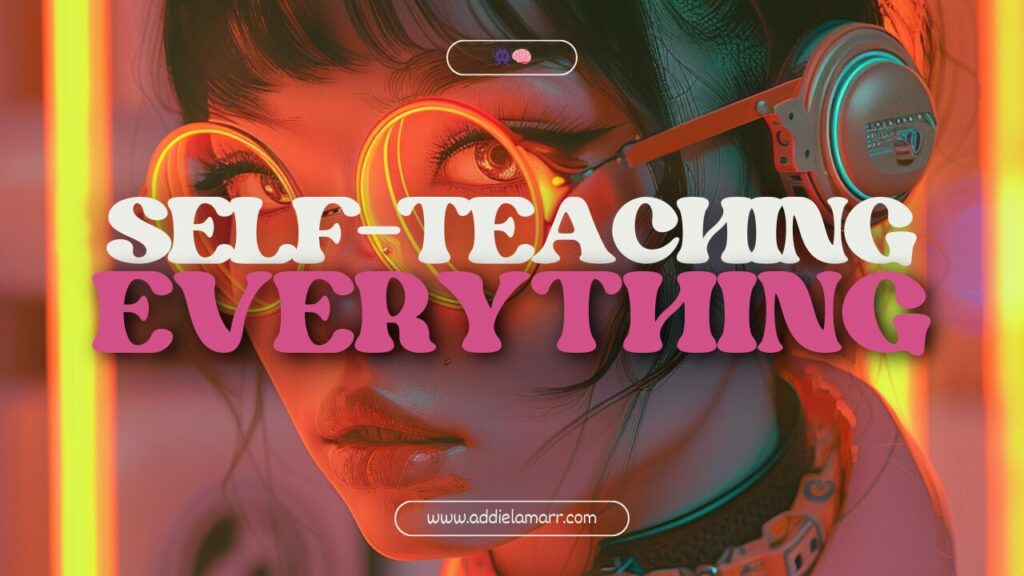Let’s be real: teaching yourself complex technical topics can feel like climbing a mountain with no map. But here’s the thing: you can do it. No degree, no massive tuition, no fancy instructor required. All you need is the right mindset, the right tools, and a bit of patience.
In this article, we’re going to break down exactly how to self-teach yourself anything from programming to quantum physics. So buckle up—let’s turn that overwhelm into a step-by-step game plan.
Step 1: Build Your Own Second Brain (Trust Me, It’s Life-Changing)
Ever feel like you learned something last week and it’s already gone? You’re not alone. This is where a “second brain” comes into play. The concept is simple: it’s a digital system where you can store and organize everything you learn.
Think of it like a personalized Google for your brain—notes, ideas, resources, explanations, all accessible in one spot. Tools like Notion, Obsidian, or even a well-organized Google Drive work wonders. Break your notes down into bite-sized chunks, categorize them, and tag them with keywords so future-you can easily find them.
Pro tip: Start organizing your notes from Day 1. Don’t wait until you’ve learned “enough”—you’re building a lifelong reference library here.
Step 2: Don’t Just Watch—Do Hands-On Labs
If there’s one thing you take from this article, let it be this: doing is infinitely more effective than just reading or watching. Whether you’re trying to learn a programming language, hardware design, or hacking techniques, you’ve got to get your hands dirty.
Interactive learning platforms like TryHackMe (for cybersecurity) or Codecademy (for coding) offer hands-on labs where you can practice what you’re learning in real-time. The magic here is that making mistakes is part of the process. You learn ten times more by failing and figuring it out than by passively consuming information.
Step 3: Slow Down to Speed Up
Here’s where a lot of people mess up: they try to learn everything as fast as possible. But here’s the secret: when you move too fast, you don’t actually retain anything. You might finish a course, but a week later, your brain’s hit the reset button.
Instead, embrace slow learning. Take your time, and dive deep into each concept. Don’t move on until you can explain it to someone else (we’ll cover this next!).
Think of learning like building a house—you’ve got to make sure that foundation is rock solid before adding new layers.
Step 4: The Feynman Technique—Explain It Like You’re Teaching a Five-Year-Old
Richard Feynman, a Nobel Prize-winning physicist, had a powerful learning method: teach it to someone else. The idea is simple—if you can’t explain a concept clearly and in your own words, you don’t really understand it yet.
Here’s how to use the Feynman Technique:
- 1. Pick a concept you’re learning.
2. Write it down as if you’re teaching it to a complete beginner.
3. Break it down into super simple terms.
4. Identify any gaps in your understanding (because they will pop up).
5. Go back and review those gaps, then try explaining again.
Step 5: Take Online Courses—but Be Active, Not Passive
Courses are a treasure trove of information, but the key to really benefiting from them is active learning. Don’t just passively watch video after video. Pause often. Take notes. Write down questions. Do every single practice problem (even the boring ones). The more you interact with the material, the more it sticks.
But here’s a next-level trick: automate the knowledge you’re gaining.
When you go through a course, don’t just take notes—take screenshots of the slides or key points and automate them into a system that makes your new knowledge immediately usable. This could be through building custom tools like a GPT-powered system that answers questions from your notes, creating small automations to practice what you’ve learned, or even setting up reminders to apply concepts. Not only does this make the material accessible down the road without having to re-learn everything, but it forces you to engage with the content in a hands-on, practical way.
Pro tip: Before moving on to the next module, quickly turn what you’ve learned into an automation or small project. That way, the info isn’t just sitting in your head; it’s getting put to use and reinforcing itself every time you come back to it!
Step 6: Consistency Is King
Here’s another harsh truth: cramming is the enemy of mastery. If you want to truly understand a complex topic, you’ve got to be consistent. It’s way more effective to study for an hour every day than to binge-learn for 12 hours once a week. Set small, realistic goals, and stick to them.
And here’s where things get cool: as you become more consistent, you’ll notice how your brain starts building connections between topics without you even realizing it.
Pro Tips to Level Up Your Self-Education
Now that you’ve got the basics down, let’s look at some ways to supercharge your learning:
1. Embrace Mistakes
When you hit a wall (and you will), embrace it. It means you’re pushing your limits. Instead of getting frustrated, use it as a sign you’re about to break through to deeper understanding. In fact, treat each mistake like a mini puzzle—it’s something to solve, not to avoid.
2. Start Small but Be Consistent
Don’t try to learn everything at once. Start with just 30 minutes a day. Gradually increase that as you feel more comfortable, but always keep it consistent.
3. Use Flashcards for Key Concepts
An oldie but a goodie—flashcards help reinforce key ideas. Use apps like Anki or Quizlet to create digital cards. The beauty of this method is that it uses spaced repetition, which is a fancy way of saying you review stuff just before you’re about to forget it.
4. Join a Community
Find an online community or a study group of people learning the same stuff. Whether it’s Reddit, Discord, or specialized forums, surrounding yourself with people on the same path can be super motivating—and you’ll learn from each other’s questions and struggles.
5. Don’t Forget to Take Breaks
Your brain needs time to process what you’re learning. After an intense session, take a break. Go for a walk, play a video game, or just relax. Trust me, when you come back, you’ll feel refreshed and things will click much more easily.
Final Thoughts: It’s a Marathon, Not a Sprint
Learning complex topics can feel overwhelming, but here’s the good news: it’s 100% doable if you go about it the right way. Build your second brain, slow down, teach others, and stay consistent. Learning isn’t something you do once—it’s something you continuously refine.
You’ve got this. Now go tackle that technical topic head-on and watch yourself grow!




An excellent motivational advice one can read before starting a course or a learning process. Its step by step illustration is like the key to success if one follows it. You would be blessed each time someone reads it and makes use of it. Keep it up and keep going.
Hi, I just discovered your Instagram page today and I’m so glad I did, I’ll love to keep learning using your tips and share these same tips possibly to help grow my social media presence. I’d love to have your permission to share and reference your platform.
You have my permission to share 🙂 Happy it’s resonating with you!
Thank you so much. This has been very useful and it reinforces everything that I have been feeling these past couple of weeks! Keep up the great content!